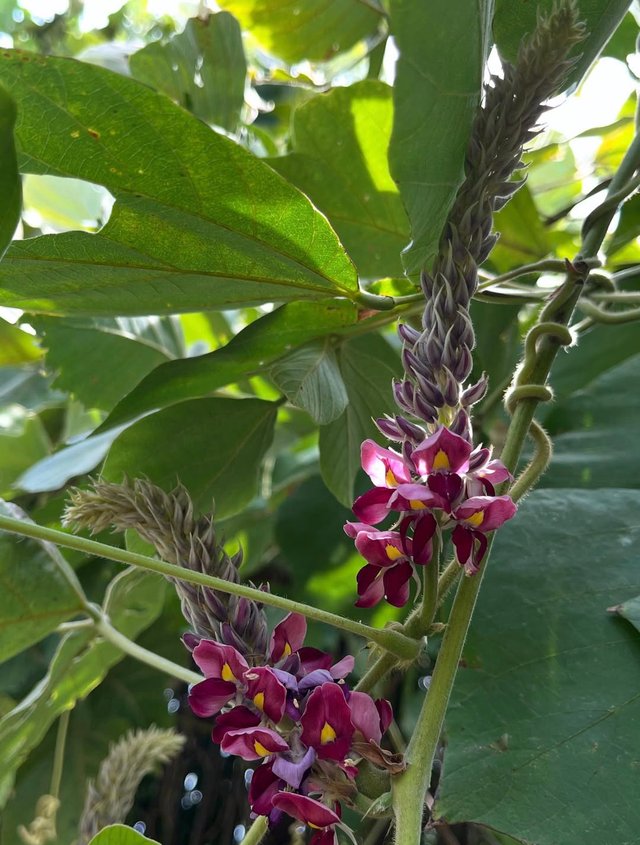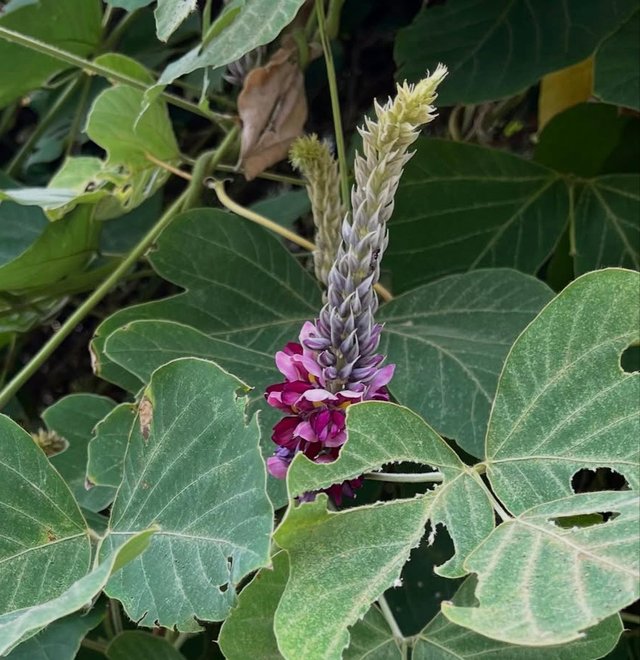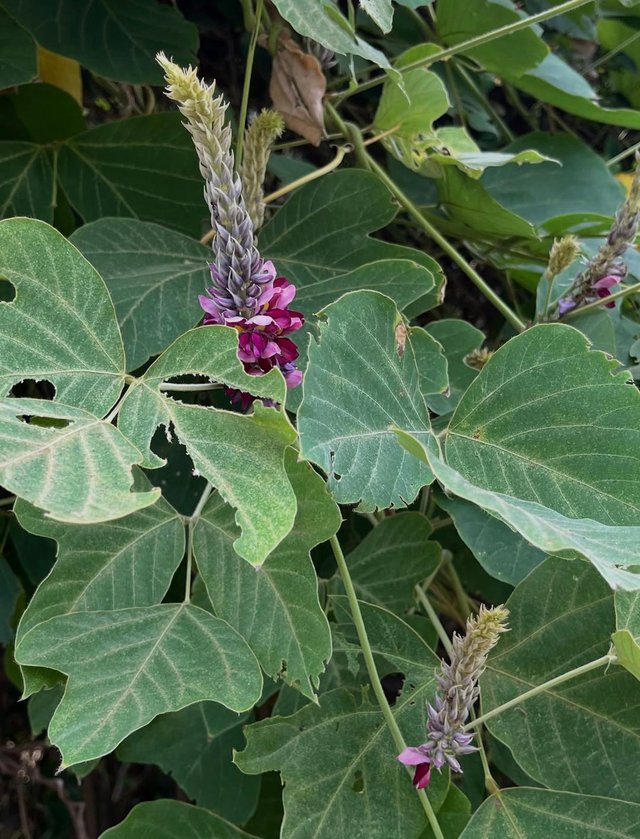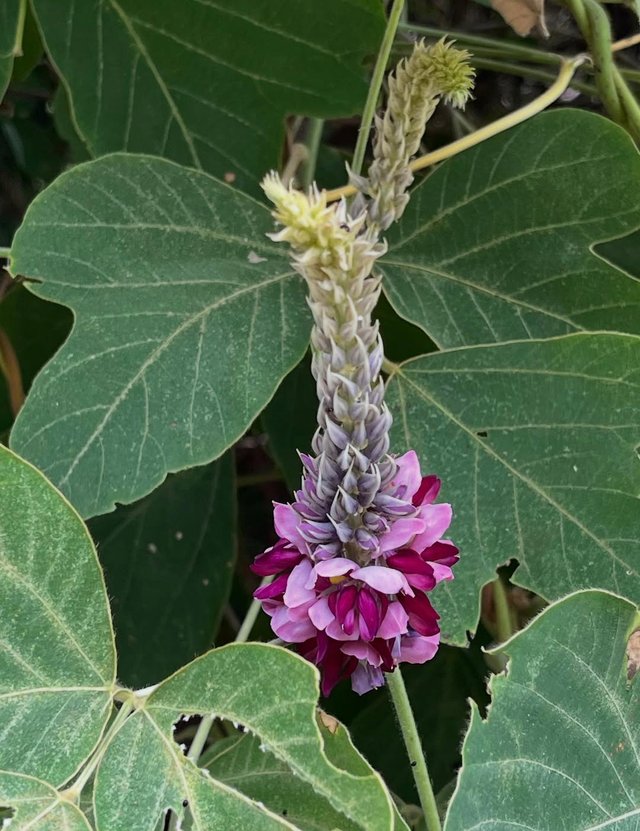Pueraria montana Flower
Pueraria montana commonly known as kudzu is a fast-growing perennial climbing vine in the plant produces clusters of attractive purple to reddish violet flowers that grow on long racemes during the late summer months the flowers are pea-like in structure typical of legumes and are known for their pleasant grape-like fragrance which attracts bees butterflies and other pollinators the blooming is usually followed by the formation of flat hairy seed pods containing small brown seeds although the plant primarily spreads by vegetative means rather.
Than seed germination kudzu vines can grow at an extraordinary rate sometimes up to a foot per day under ideal conditions allowing them to cover vast areas including trees shrubs and man-made structures this vigorous growth habit makes them both admired for their ornamental flowers and infamous as an invasive species in many parts of the world especially in the southeastern United States where they were introduced in the late 19th century originally promoted for erosion control forage and ornamental purposes kudzu quickly became a dominant plant outcompeting native vegetation and earning the nickname “the vine that ate the South” despite its invasive nature.
Pueraria montana has cultural medicinal and ecological importance in traditional Chinese and Japanese medicine the roots known as kudzu root or Gegen have been used for centuries to treat ailments such as fever headaches diarrhea alcoholism and cardiovascular issues modern research has investigated its isoflavones particularly puerarin for potential benefits in reducing alcohol cravings regulating blood sugar and supporting heart health in addition to its medicinal use kudzu is also consumed as a food source the starchy roots can be processed into flour for thickening soups and sauces while the young leaves and shoots can be eaten as a leafy vegetable or prepared like spinach.



